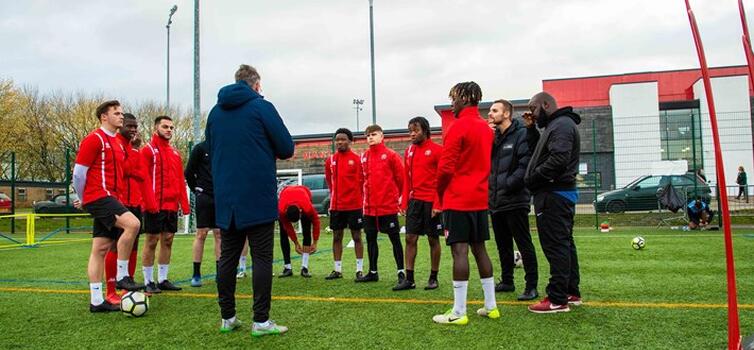Carl Wild: Developing decision-making in young players

Written by Carl Wild — January 8, 2022
MORE often than not, the decisions that players make will be the deciding factor in the outcome of a game.
The ability to successfully solve problems is an essential element of player performance, whilst also being key to players developing a deeper level of game-understanding.
Putting young players in highly unpredictable environments can help them develop their perception skills, tactical awareness and decision-making ability.
These are often referred to as ‘random’ practices, compared to those that are constant (unopposed where the environment is predictable) or variable (can be opposed or unopposed within a fairly unpredictable environment). Often, random practices are not used as much, because they can be more complicated and challenging for both the players and coach.
Research by Ian Yates, Mark Williams and Paul Ford in 2010 found that 35% of practices used within professional Academies in England were ‘playing-form’, classified as those with higher levels of interference and cognitive simulation.
Martin Dean, Reading’s Lead Youth Development Coach, suggested this could be due to a preference for “highly-structured or cosmetic practices” (which are thought to enhance technical ability within isolation) in this article for The FA's Boot Room in 2020.
This preference could also be due to Academies using fixtures against other teams as developmental interventions and seeing these as the ideal opportunity for the players to develop decision-making, rather than during training.
In my experience, the benefits of using practices that create mess and chaos are now widely recognised in the Foundation Phase. Not only do they replicate the game of football but also other environments.
If you watch children play in the school yard, the games they play are often chaotic, with rules that are regularly reviewed and adjusted.
Yet as players progress within the Academy system and enter the Youth Development Phase, it is likely they will experience more structured practices.
The number of training sessions increases, as does the type and amount of support they receive - sport science, performance analysis and so on - and the games that they play in become more competitive.
But to develop decision-making, we still need to put players at these ages in situations where they will get lots of opportunities to make decisions. This way they can learn what works and what doesn’t within a wide range of different scenarios. And when they then come across these situations in a game, they will know what to do without having to think about it.
Here are a couple of examples of random practices that can help to develop decision-making (there are more in my book The Intelligent Soccer Coach):
Example practices
Figure 1 (below) shows a small-numbered practice, 4v4, in which a team wins a point if a player receives a pass in the oppositions end zone.
This could be used for a number of different focuses, such as forward passing and supporting runs. Within it, there will be numerous decisions a player has to make, just as they would within a match.

Do they pass or dribble? If they pass, who do they pass to? Within the main aspect of the practice, the players are quite restricted in the options they can choose - it has to be a pass to a team-mate situated inside the end zone.
The way in which a team can win a point replicates a team breaking one of the opposition’s lines, with an emphasis on achieving this through a pass.
However, in a game, the players will have choices in how to achieve this end goal. They could do it through a pass, as the practices replicates, but they could also do it by driving with the ball if there is space in front or by dribbling past an opponent.
There is an argument that the practices we place the players in should allow them to make the same amount of decisions, or as close to as possible, as they would in a match.
So, in this particular practice, we can maintain the initial focus by providing players with a greater reward (eg two points) if they achieve the task with a pass to a team-mate, but still some reward (one point) if they manage to get into the end zone by dribbling or driving with the ball.
Then we are increasing the amount of decisions a player has to make while still providing them with a technical focus.
In Figure 2, (below) the ball must travel through the square within the centre of the area before a team can win a point by passing the ball into one of the small goals situated just outside of the area.

Again, the key element to the practice is giving the players the freedom to play the ball through the area in any way that they choose; they just need to select the right option at the right time.
In conclusion, we need to do more than just encourage players to make their own decisions within a practice or a game, we need to make it an integral part of the environment we create, so that it becomes their normal.
To do this, we need to provide them with as much freedom as we can within the practices that they participate in, so that they can make their own choices and develop their decision-making and game intelligence.

- Carl Wild is Programme Leader for BA (Hons) in Football Coaching & Management at UCFB and author of The Intelligent Soccer Coach






-1.png)





